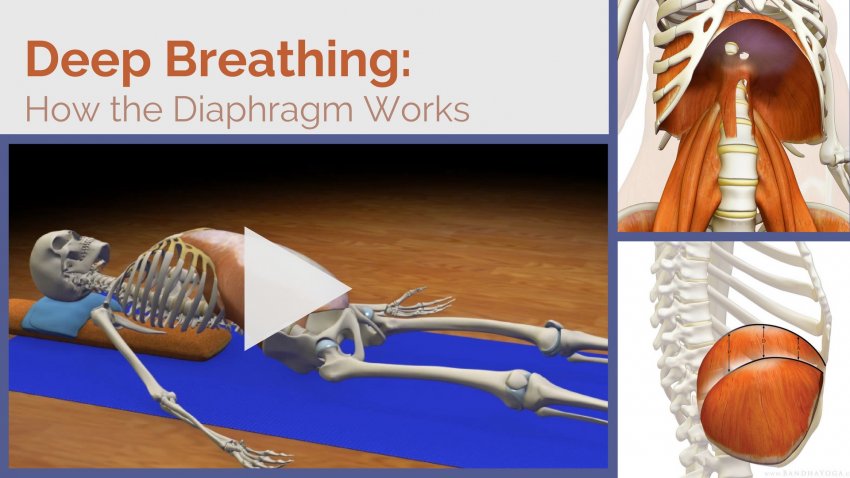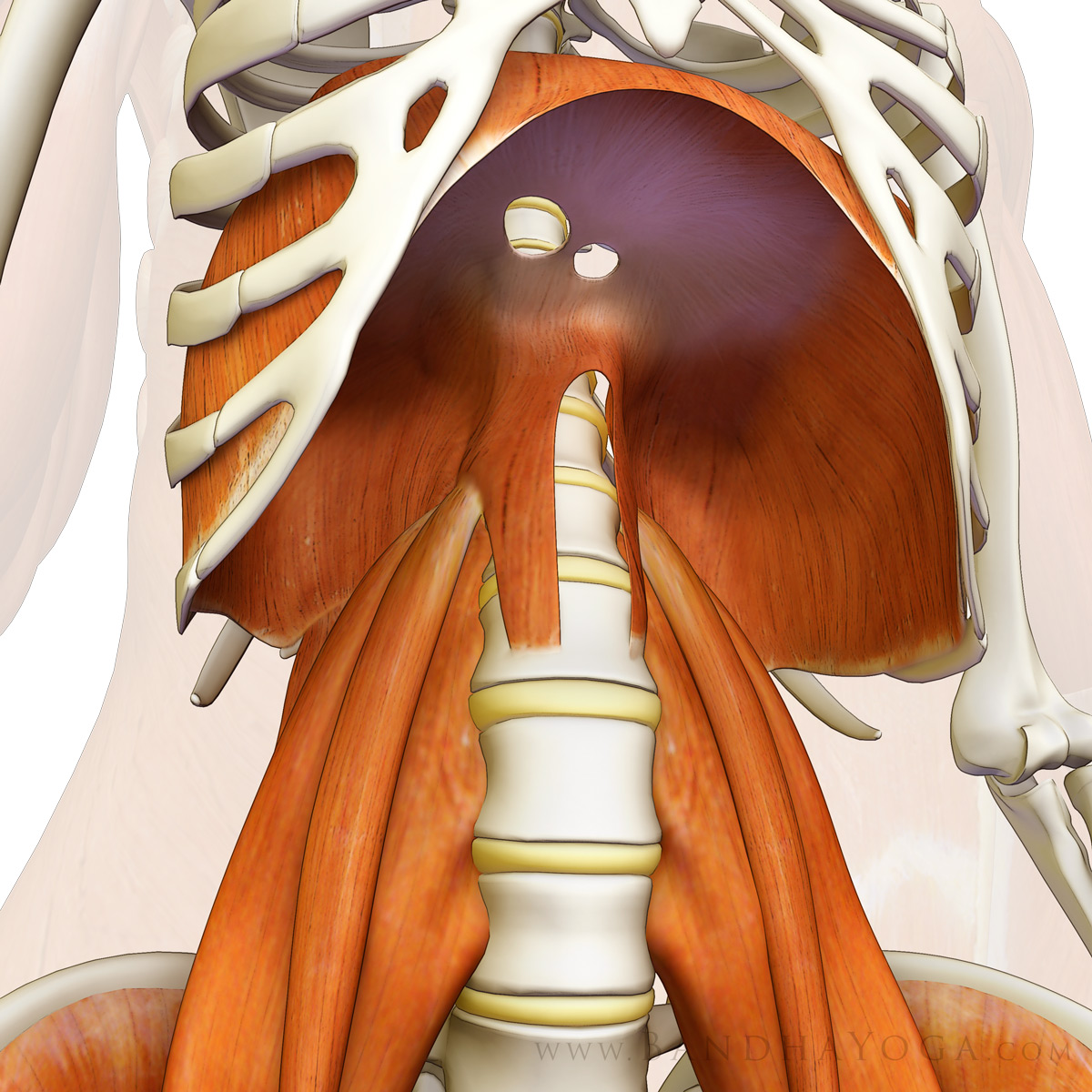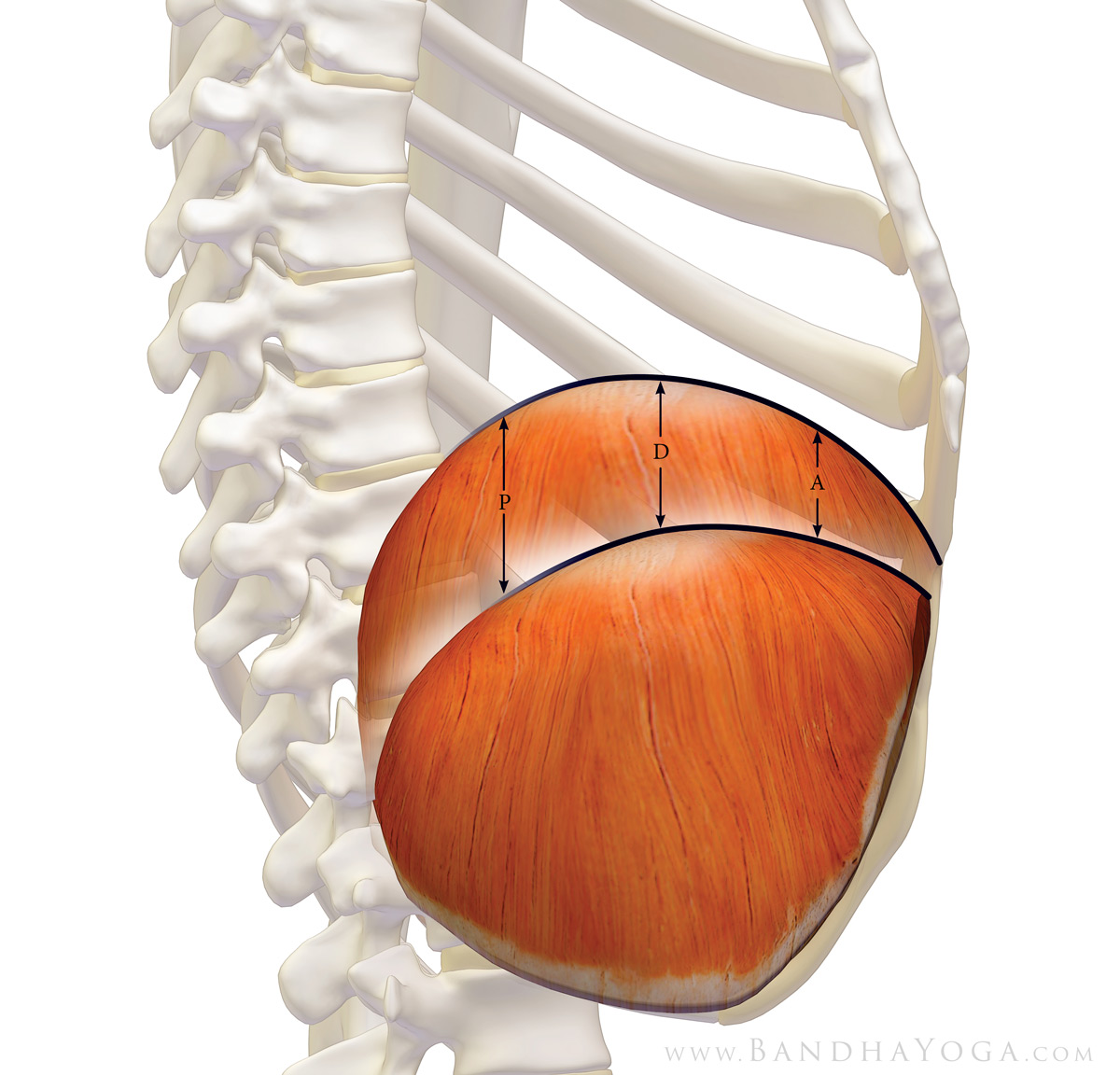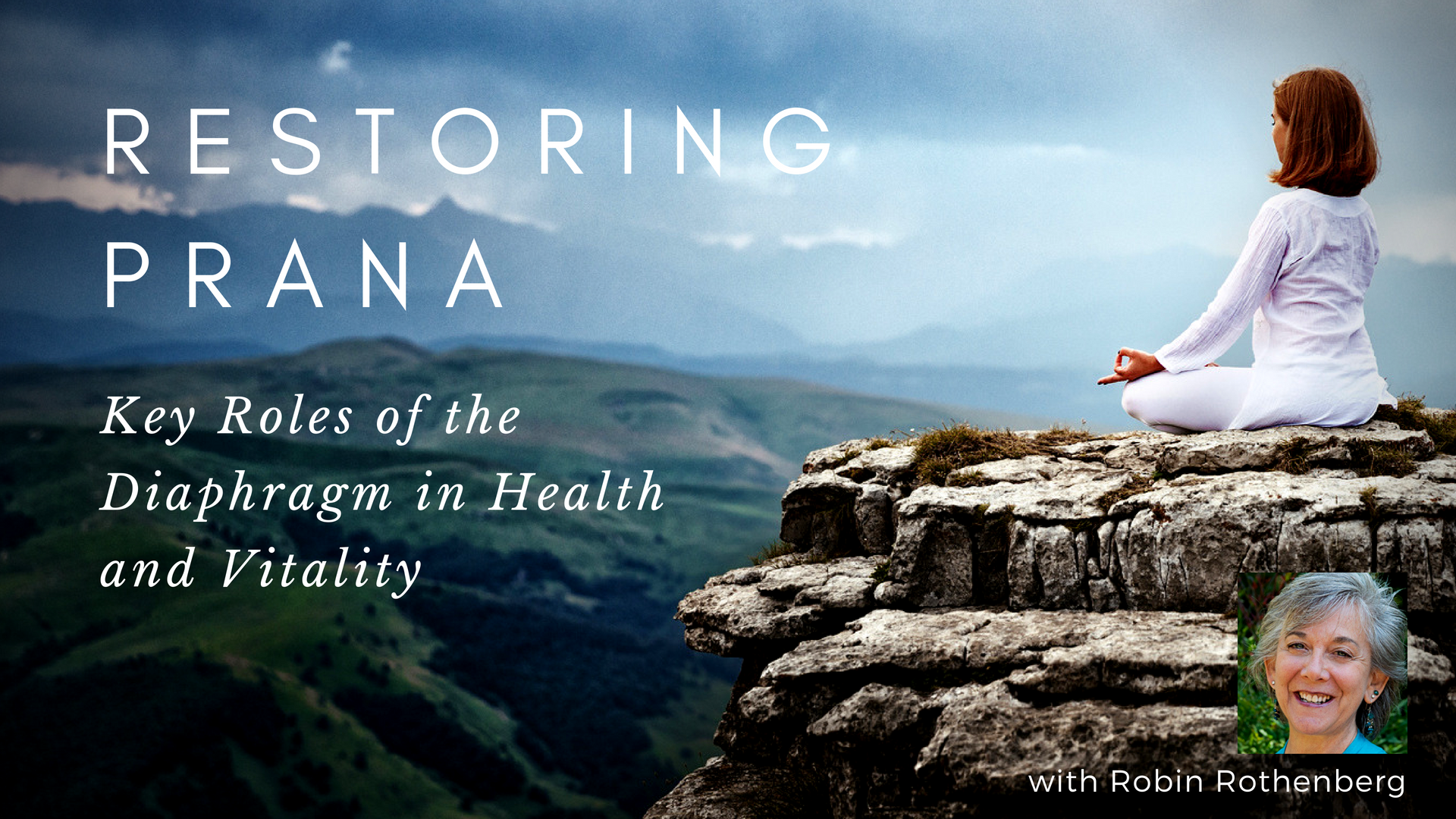View basket (0 items $0.00)

Dr. Ray Long: Yogic Deep Breathing - How the Diaphragm Works
Your thoracic diaphragm is the main engine for breathing, supplemented by the accessory muscles of your chest and abdomen. It is also an important postural muscle with functional connections to your pelvic floor. How does it work? Let’s look at “diaphragmatic” or “belly” breathing.

(Figure 1: The thoracic diaphragm (also showing psoas major muscle). )
What is Diaphragmatic Breathing in Yoga?
In diaphragmatic breathing, you actively expand the abdomen during inhalation. The abdominal expansion occurs via the diaphragm contracting and pressing down on the abdominal contents. Chest expansion is kept at a minimum in this type of breathing. Exhalation is a relaxed process and occurs through the elastic recoil of the chest wall and lungs.
Regular practice of diaphragmatic breathing draws the mental focus into what is known as the “belly brain.” It has a calming effect on the mind while, at the same time, potentially strengthens the diaphragm. I recommend practicing diaphragmatic breathing for five to ten minutes per day. We have included a video link below to guide your practice and aid you in visualization of the movement of the diaphragm and abdomen.
Diaphragmatic Breathing Video:
How Much Does Your Diaphragm Actually Move?
The answer to this question depends on how deep of a breath you take and what part of the diaphragm you are asking about. The diaphragm is a sheet-like, dome-shaped muscle (when it is relaxed). Upon contraction (on the inhalation), it flattens out and presses down on the abdomen. The net result is a negative inspiratory pressure, which draws air into the lungs.
Tidal, or resting breathing results in smaller movements of the diaphragm, while vital capacity breathing (as in a deep diaphragmatic breath) results in much larger movement. This is where you take a complete, full inhalation.
The posterior, or back part of the diaphragm exhibits the greatest excursion; the amount of diaphragmatic motion decreases progressively as we come forward. Figure 2 illustrates this. MRI studies (which are considered the most accurate) have quantified diaphragmatic motion during deep breathing, with the posterior region moving an average of 10 cm (about 4 inches) between inhalation and exhalation.
This decreases progressively as we move forward on the diaphragm, with the most anterior portion moving about half that of the posterior. Diaphragmatic motion decreases by about one-third in the sitting position compared to lying on your back. (see reference below)

(Figure 2: Thoracic diaphragm (side view): P= posterior; D= dome; A= anterior. Note that the excursion of the posterior diaphragm is greatest.)
Does the Heart Move with Your Diaphragm When You Breathe?
Yes, but not the full excursion of the posterior diaphragm. The pericardium, the sac surrounding the heart, has fascial connections to the diaphragm. Accordingly, the heart does move during breathing.
Your heart is located more anterior on the left dome of the muscle, and so it moves less than the full excursion of the posterior portions of the diaphragm, but it moves significantly nonetheless.
Another yoga anatomy article from YogaUOnline and Dr. Ray Long - Revolved Half Moon Pose: 3 Steps to Lift and Stabilize the Pelvis
Yoga Anatomy - 6 Reasons Why the Diaphragm May be the Coolest Muscle in the Body - from YogaUOnline and Jessica Reale, PT.
Study with YogaUOnline and Robin Rothenburg - Restoring Prana: Key Roles of the Diaphragm in Health and Vitality.
This article originally appeared in Daily Bandha. Reprinted with permission.
 Author, Ray Long MD, FRCSC is a board certified orthopedic surgeon and the founder of Bandha Yoga. Ray graduated from The University of Michigan Medical School with post-graduate training at Cornell University, McGill University, The University of Montreal and Florida Orthopedic Institute. He has studied hatha yoga for over twenty years, training extensively with B.K.S. Iyengar and other leading yoga masters.
Author, Ray Long MD, FRCSC is a board certified orthopedic surgeon and the founder of Bandha Yoga. Ray graduated from The University of Michigan Medical School with post-graduate training at Cornell University, McGill University, The University of Montreal and Florida Orthopedic Institute. He has studied hatha yoga for over twenty years, training extensively with B.K.S. Iyengar and other leading yoga masters.

3d Graphic Designer / Illustrator Chris Macivor has been involved in the field of digital content creation for well over ten years. He is a graduate of Etobicoke School of the Arts, Sheridan College and Seneca College. Chris considers himself to be equally artististic and technical in nature. As such his work has spanned many genres from film and television to videogames and underwater imagery.
Resources
Kiryu S, Loring SH, Mori Y, Rofsky NM, Hatabu H, Takahashi M. Quantitative analysis of the velocity and synchronicity of diaphragmatic motion: dynamic MRI in different postures. Magn Reson Imaging. 2006 Dec;24(10):1325-32.
Featured Courses









